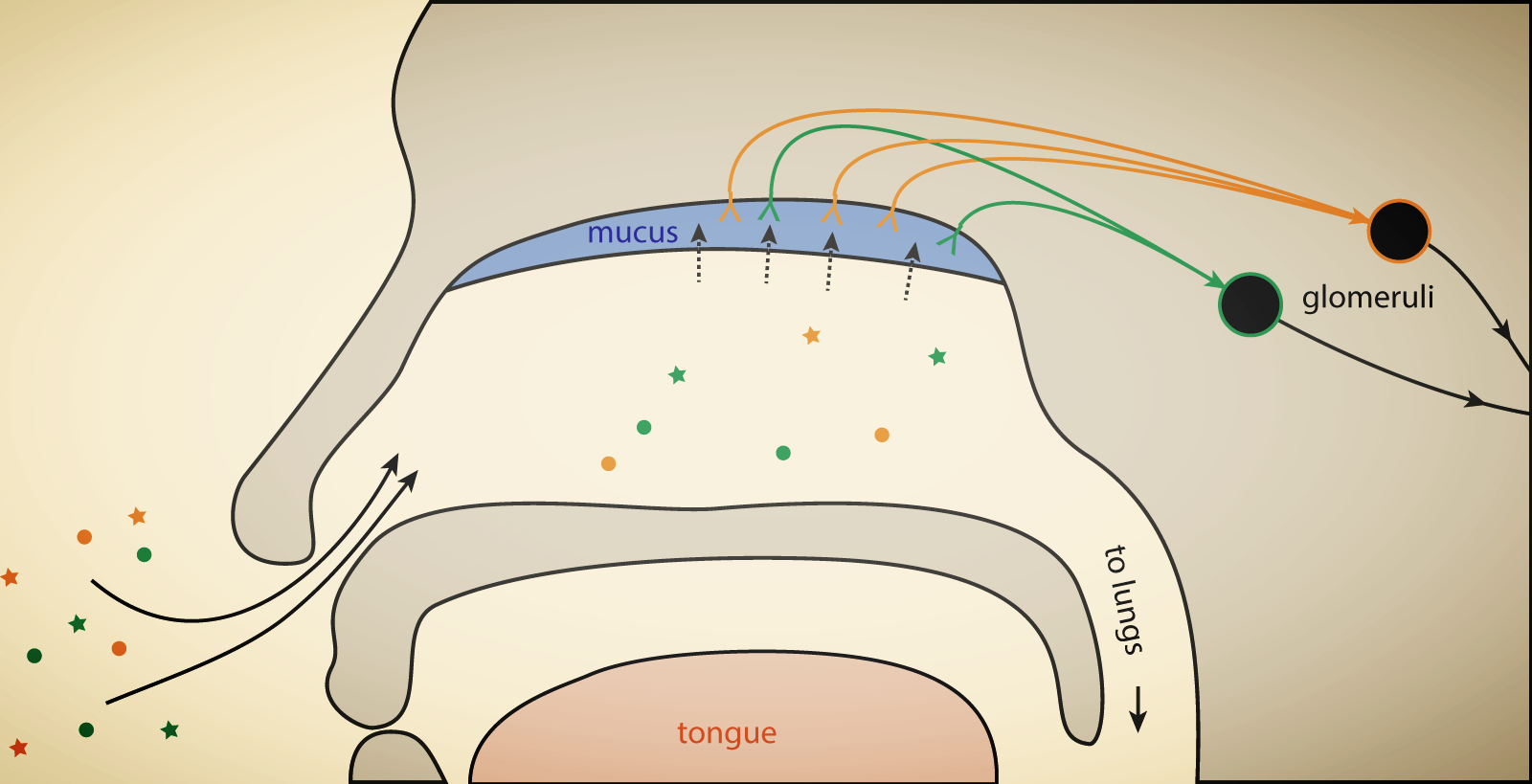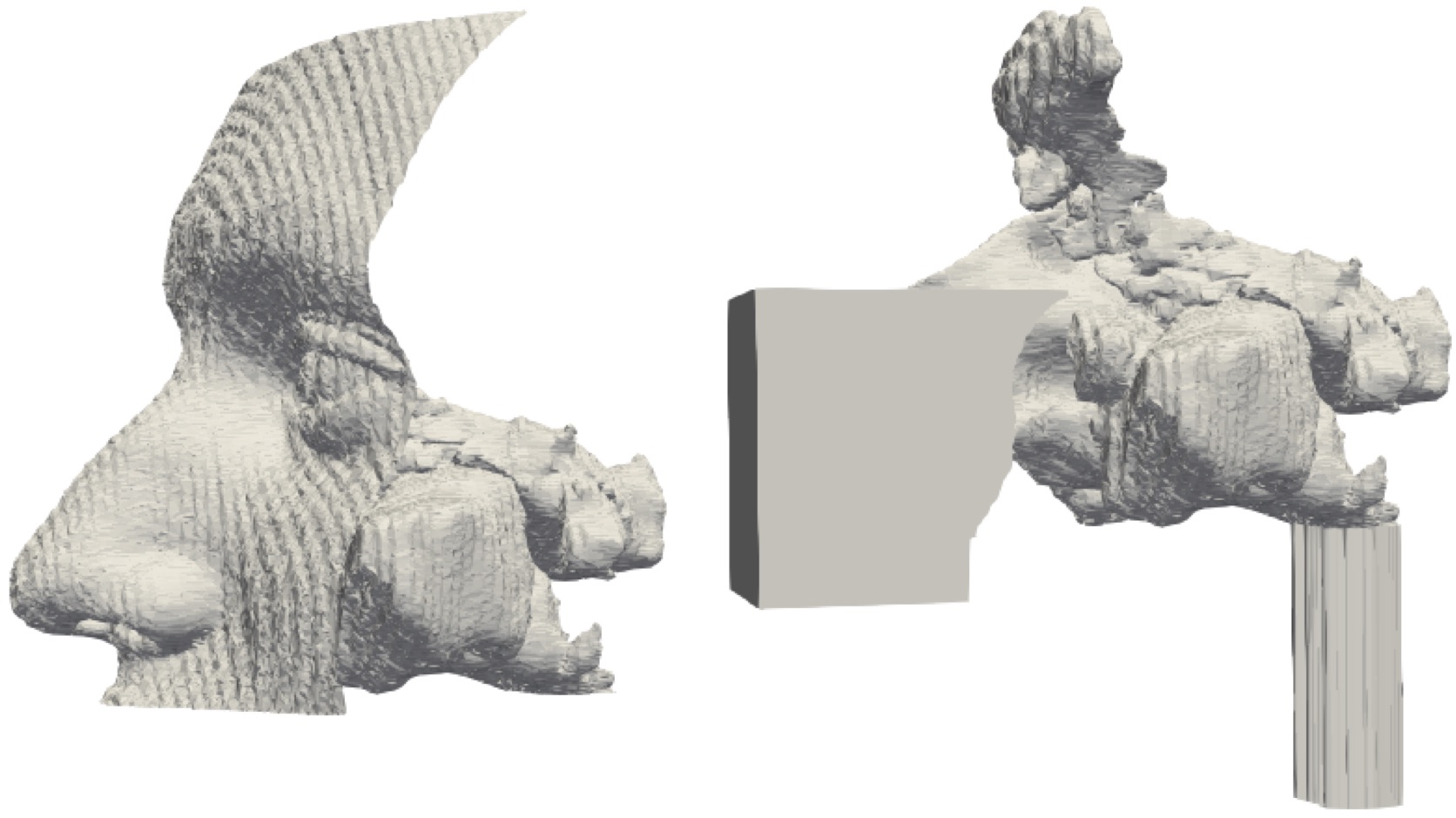The nasal cavity has a surprisingly geometry in all animals. It is not entirely clear why this labyrinth-like geometry would be needed. In particular, the narrow geometry is prone to blockage, which leads to prevalent nasal obstruction. Diagnosing and treating nasal obstruction is a challenge, in part, because the connection between the complex geometry and nasal airflow is not understood. We aim at unraveling this mystery by using both simple physical models as well as detailed numerical simulations.
Fluid dynamics of inhalation and exhalation
All vital tasks of the nose depend critically on the airflow, which is driven by the pressure difference created by the lungs and depends on the complex geometry of the nasal cavity. We want to understand how the geometry influences the flow, so we can learn how to modify it to help treating breathing problems. However, choosing the right treatment also requires considering the other functions of the nose, like humidification, heating, and smelling. The physics of these processes can be conceptualized as the transport of passives tracers by the flow and their exchange with the walls, which are covered in aqueous mucus. We want to understand how the nasal geometry and the absorption properties of the mucus influence these processes. What nasal geometry heats and humidifies the air effectively? Where should the olfactory receptors be placed to effectively sense odorants? Does the odor percept depend on the direction of the airflow? Are humans particularly good at sensing food odors while exhaling? Insights in the physical aspects of olfaction will help to understand the evolution of the nose and to optimize the geometry and surface properties of artificial smell sensors.
Labyrinth-like nasal shape from physical and geometric constraints
Nasal cavities have surprisingly complex, labyrinth-like shapes, as seen on the left. We hypothesize that this geometry serves the nasal function. One important function is the heating and humidification of the inhaled air, which works best in narrow geometries. However, such geometries inhibit the airflow, so that breathing becomes difficult. Solving the fluid dynamics problem, we show that these opposing requirements can be satisfied best by a narrow geometry whose walls are separated by the same distance everywhere. In contrast, the overall shape of the nasal cavity is less important and could thus develop the observed labyrinth-like structure to obey geometrical constraints. Our theory predicts measured wall separations and shows that human nasal cavities are much smaller than expected for their body weight, which might explain why we need to breathe through our mouth during heavy exercise.
Validated reconstructions of geometries of nasal cavities
To simulate airflow in the nasal cavity, it is paramount to have a faithful representation of the nasal geometry in the computer. Obtaining such a geometry is challenging, since the resolution of typical image modalities, like CT scans, is not very much higher than the narrow chambers of the nasal cavity, which have widths of the order of millimeters. We developed a dedicated algorithm to reconstruct nasal cavities from CT scans, which we calibrated against CT scans of known geometry, so called CT phantoms. In the future, this procedure will allow us to measure nasal airflow precisely and study in detail conditions of nasal obstruction.
Information theory of olfaction
We use olfaction, our sense of smell, to recognize the chemical composition of our surrounding. Despite its importance for all animals, from bacteria to humans, smell is the sense we understand the least. For instance, we do not know how our nose discerns mixtures of the about 10,000 chemicals that we can smell. Another open questions is how different concentrations of smells are distinguished. All this information about an odor must be encoded in the activity pattern of the about 300 different receptor types in a human's nose.
Our group studies the olfactory system by investigating theoretical models of the receptors. We would like to understand how the typically complex odors, consisting of various substrates at different concentrations, are processed. Furthermore, some substrates often appear together in odors, for instance because the originate from the same biological process. Clearly, typical odor mixtures also vary from place to place and from season to season. This structure in typical odor mixtures has likely played a role in evolution to optimize the receptors. By studying simple model as well as naturally occurring receptors, we will uncover design principles of the olfactory system, which can then be used to improved artificial smell sensors.




